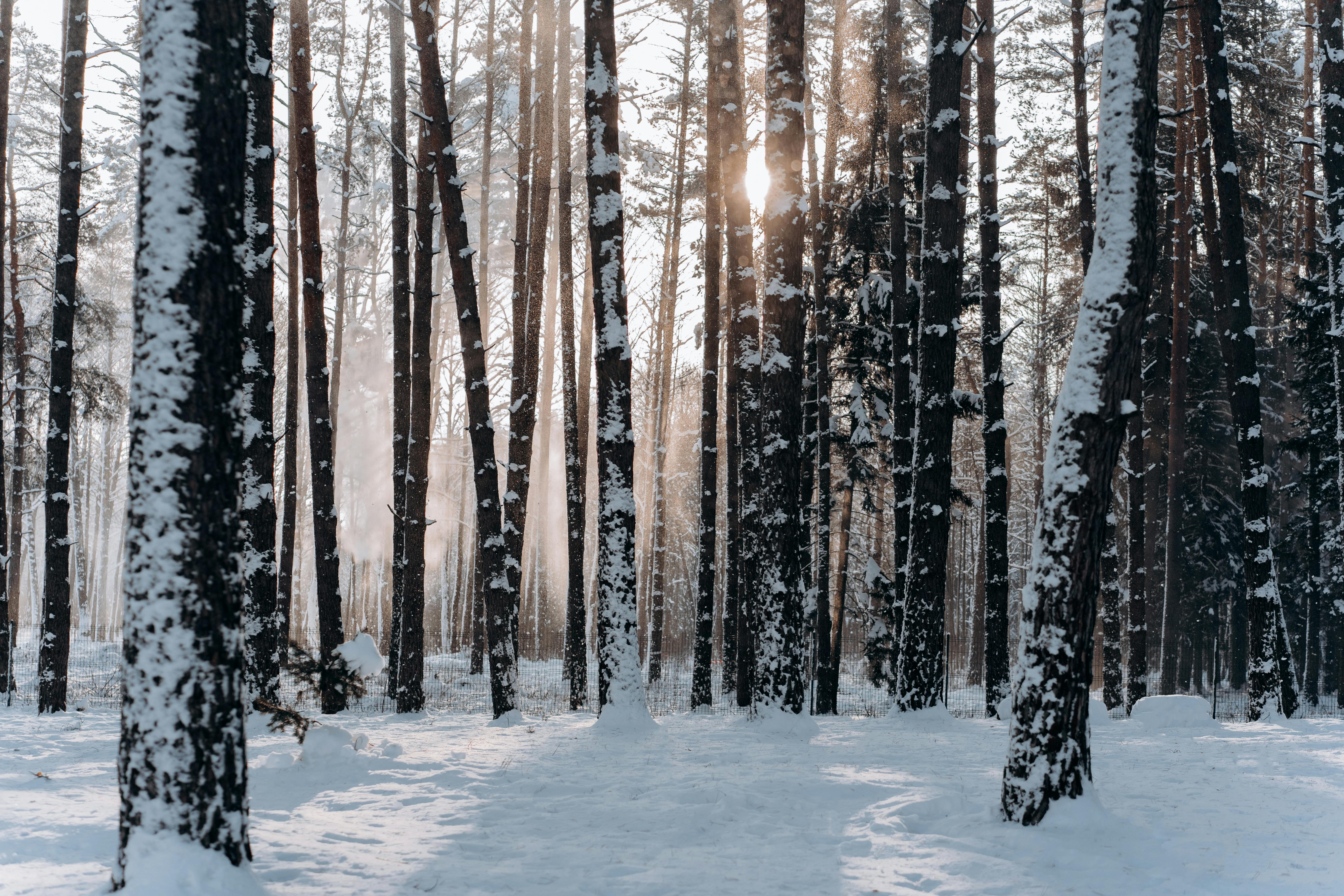Will frost kill blueberries? Frost can be devastating to blueberry plants if temperatures drop below 28°F (-2°C). Blueberry bushes are very sensitive to cold and temperatures this low can cause severe damage or even death to the plant. While some varieties of blueberries are more cold hardy than others, it is important to take steps to protect your plants from frost if you live in an area that experiences freezing temperatures.Frost is a thin layer of ice crystals that forms when the temperature of a surface falls below the freezing point of water. It is commonly seen on windows and other surfaces during cold winter months, and it can occur in any environment where the air temperature is below freezing. Frost usually appears shortly after sunrise, when the air temperature has dropped to its lowest level for the day.
How Does Frost Affect Blueberries?
Frost can have a significant impact on blueberry crops. When temperatures drop below freezing, the ice crystals in frost can damage the tender cell walls of the blueberry plants, leading to wilting and death of the fruit and leaves. In extreme cases, entire plants may be killed by frost. Frost also reduces the sugar content of blueberries, making them less sweet and palatable. To protect against frost damage, some blueberry farmers use overhead sprinklers or row covers to protect their crops from low temperatures. Other farmers may use special chemicals or heaters to provide additional protection for their crops. In any case, it is important for farmers to take steps to protect their blueberry plants from frost damage in order to ensure a good harvest.
What Temperature Is Too Cold for Blueberries?
Blueberries are cold-hardy plants that can survive temperatures down to -20°F. However, blueberry bushes prefer warmer temperatures and will be damaged if exposed to temperatures below 10°F or above 85°F for more than a few hours. Even when temperatures reach below 10°F, some blueberry varieties may suffer damage from the extreme cold. The blooms, foliage, and fruit of these plants can suffer frost damage when exposed to temperatures lower than 20°F. Prolonged exposure to temperatures below freezing can kill the entire plant.
To protect blueberries from extreme cold, gardeners should use mulch around the base of the plant and make sure that all new growth is pruned before winter begins. Additionally, covering the blueberry bush with a sheet or blanket during particularly cold nights can help insulate it from the elements and protect it against frost damage.
What Factors Increase Frost Risk for Blueberries?
Frost risk for blueberries is determined by a variety of environmental factors. Temperature, wind speed, humidity, and cloud cover are all important in determining the likelihood of frost. Cold air is heavier than warm air and tends to settle in low-lying areas, such as valleys or river basins. This can increase the risk of frost for blueberry plants growing in these locations. Additionally, the topography of a region can influence how much cold air is retained after sunset and before sunrise. For example, hills or mountains can block cold air from escaping and create pockets of cold air that can cause frost damage to nearby blueberry plants. Wind speed also plays an important role in frost risk for blueberries; strong winds can reduce frost damage by mixing warmer air into the colder temperatures near the ground. Finally, cloud cover has a significant effect on the likelihood of frost; when clouds are present, they act as blankets that trap heat close to the ground and keep temperatures higher than they would otherwise be without cloud cover.
These factors all combine to create an environment with varying levels of risk for frost damage to blueberries. Understanding these relationships is key in helping growers assess their local area’s climate and determine how best to protect their crops from potentially damaging frosts.
Can You Save Blueberries From Frost Damage?
When temperatures drop and the threat of frost looms, many gardeners worry about how to protect their blueberries. Fortunately, there are a few methods that can help save blueberries from frost damage. To start, it’s important to understand what causes frost damage in blueberry plants. Frost damage occurs when temperatures drop so low that water in the plant’s cells freeze and expand, resulting in tissue damage or death.
One way to save blueberries from frost is to cover them with a protective layer of organic mulch such as straw, hay, or leaves. This will provide insulation from the cold air and keep temperatures even throughout the night. Additionally, adding a layer of row covers or plastic over the top can provide an extra layer of protection from cold temperatures.
Another way to save blueberries from frost damage is by using fans to circulate warm air around the plants. This will help prevent temperatures from dropping too low and help prevent frost damage. Finally, it’s important to water your plants well before cold weather arrives as this will help insulate them from extreme temperature changes and reduce the risk of frost damage.
By following these tips, you can help protect your blueberry plants from frost damage and enjoy a bountiful harvest come summertime!

Signs of Frost Damage in Blueberries
Frost damage to blueberries can be devastating, reducing yields and ruining entire crops. Knowing the signs of frost damage can help you protect your blueberry plants from cold weather conditions. Here are some of the most common signs of frost damage in blueberries:
The most obvious sign of frost damage is wilting or drooping leaves. If a cold snap hits your blueberry patch, check for wilted or drooping leaves on the plant. These could indicate that the plant has been damaged by the cold temperatures.
Another common sign of frost damage is discoloration on the leaves or fruit. Blueberry plants may develop brown or black spots on their leaves or fruit after being exposed to frost. This discoloration indicates that the plant has been damaged and may not recover.
In addition to visible signs, there may be some subtle changes in your blueberry plants as well. For example, you may notice that newly developed buds don’t open properly, or growth appears stunted and slow. These could all be signs of frost damage, and indicate that your blueberry plants have been affected by cold temperatures.
Finally, it’s important to keep an eye out for fungal diseases after a cold snap hits your blueberry patch. Fungi thrive in damp conditions, so if there has been a period of heavy rain followed by a cold front, there is a greater chance of fungal diseases developing in your blueberry plants. This could further weaken them and reduce yields significantly.
If you notice any of these signs of frost damage in your blueberry plants, take steps to protect them from further harm. Pruning off dead or damaged branches can help reduce stress on the plant and allow it to focus its energy on recovering from any existing damage caused by the cold temperatures. Additionally, using mulch around your plants can help insulate them against future frosts and give them a better chance at recovery.
Can You Eat Frost-Damaged Blueberries?
Frost-damaged blueberries can still be safe to eat, but they should be checked for quality before consumption. The best way to determine if a blueberry has been damaged by frost is to inspect it closely for signs of discoloration or softening. If the blueberry appears to have been affected by frost, it should not be eaten.
Frost can cause the skin of the blueberry to become discolored and the texture to become soft and mushy. This affects the taste and texture of the fruit, making it less enjoyable to eat. Additionally, there may be mold present on the surface of frost-damaged blueberries, which can cause foodborne illness if eaten.
If a frost-damaged blueberry still looks edible and tastes okay when sampled, it is safe to eat in moderation. It is important to check for signs of spoilage before consuming any fruit or vegetable that has been exposed to frost or cold temperatures.
In general, it is best to discard any fruits or vegetables that have been exposed to cold temperatures or frost in order to reduce your risk of foodborne illness. If you must eat frost-damaged blueberries, make sure they are inspected carefully for signs of spoilage before consuming them.
Protecting Blueberry Plants from Frost Damage
Frost damage can be devastating to blueberry plants, but there are a few steps that can be taken to protect them. The most important step is to choose a variety of blueberry that is suited for the climate it will be grown in. Some varieties are more cold-hardy than others, and it is important to select a variety that can withstand the cold temperatures in the area.
Another step to protecting blueberry plants from frost damage is to mulch around the plants. Mulching helps keep the soil warm and prevents moisture from evaporating too quickly. It also helps insulate the roots of the plant and protect them from extreme temperatures. A three-inch layer of mulch should be applied around each plant in early fall, before temperatures begin to drop significantly.
During periods of extreme cold, it may be necessary to cover plants with burlap or a similar material. This will help trap some of the heat that radiates off of the ground and provide additional protection against frost damage. The cover should be removed during sunny days, as too much heat can also cause damage to blueberry plants.
Finally, watering your blueberries during periods of extreme cold can help protect them against frost damage. Watering helps keep the soil temperature warmer than air temperature, which can provide some protection against frost damage. Make sure not to overwater your plants though; blueberries require well-draining soil and standing water can lead to root rot.
By following these steps, you should be able to successfully protect your blueberry plants from frost damage and enjoy your delicious berries each summer!

Conclusion
The effects of frost on blueberries can range from minor damage to complete destruction, depending on the severity of the frost. The best way to protect blueberries from frost damage is to apply a protective layer of mulch and/or cover with a fabric row cover when temperatures drop below freezing. Additionally, if possible, rearrange plants so that those that are more frost-sensitive are located in warmer areas.
In conclusion, while a light frost will normally cause some minor damage, extreme temperatures can kill blueberries. Taking protective measures in advance is the best way to reduce the risk of damage from a frost event.



